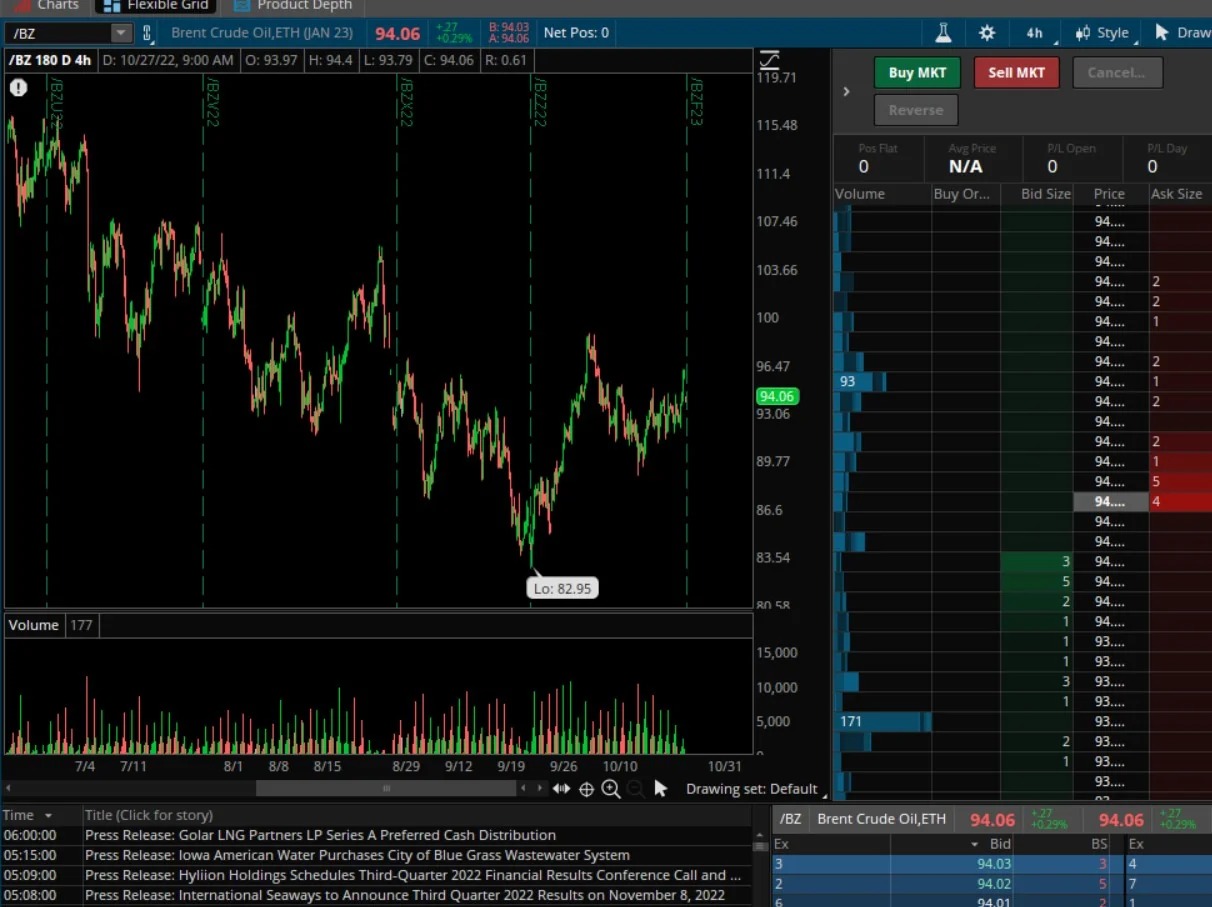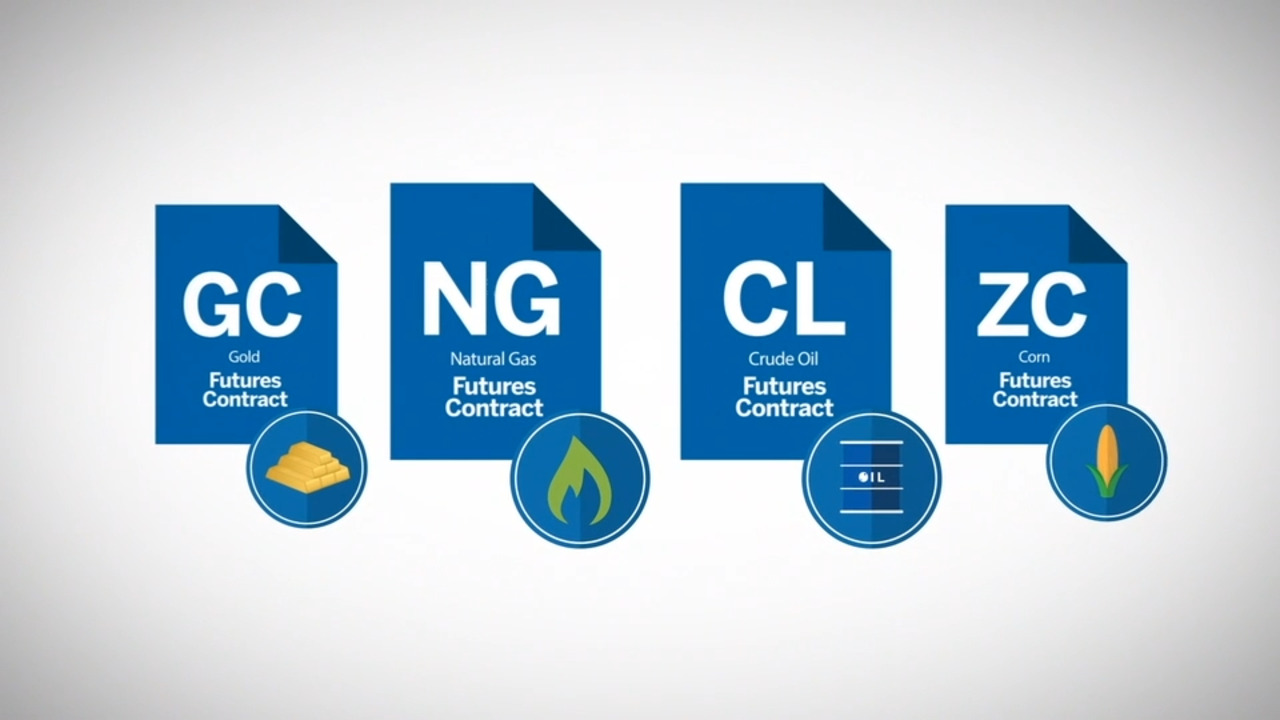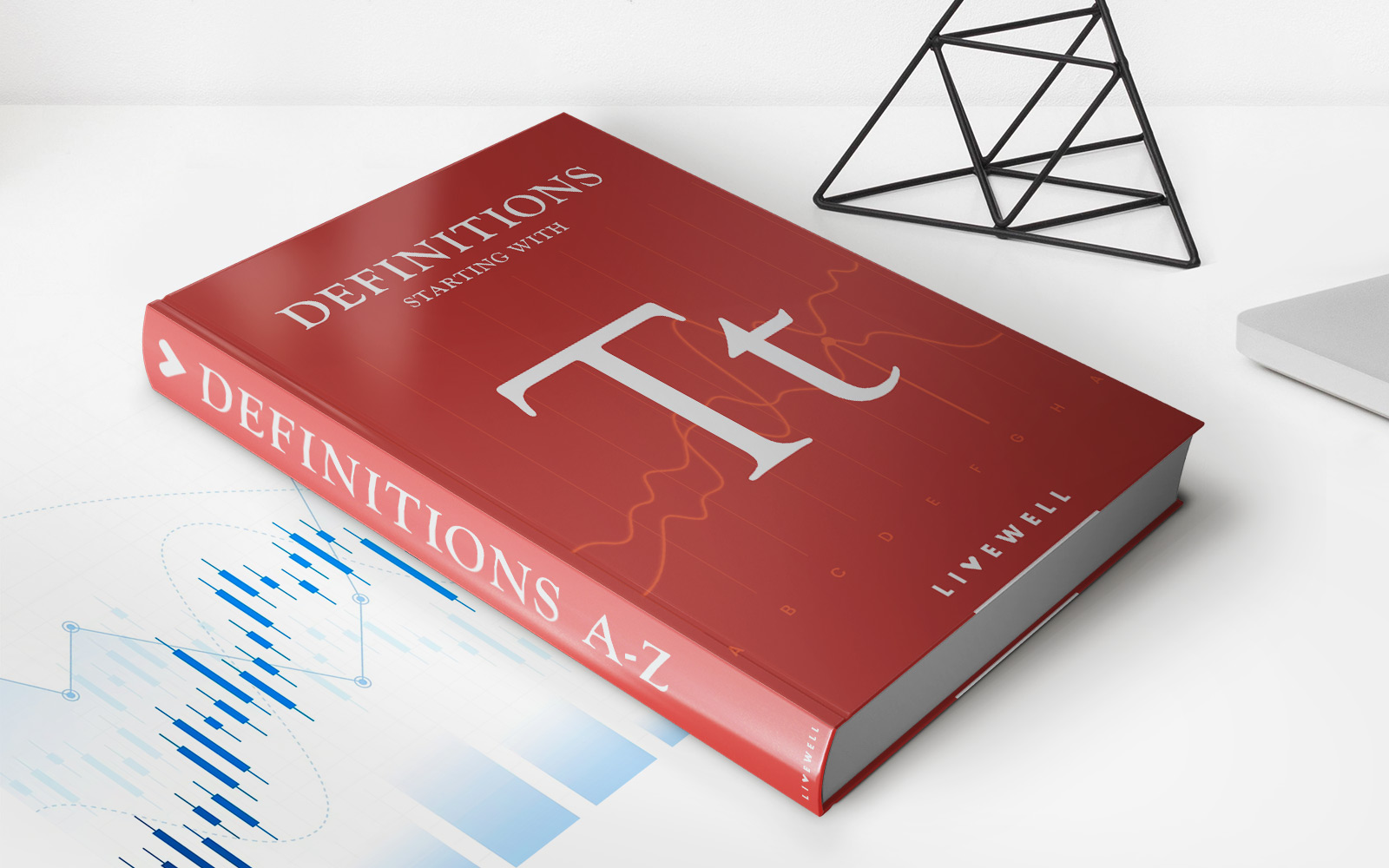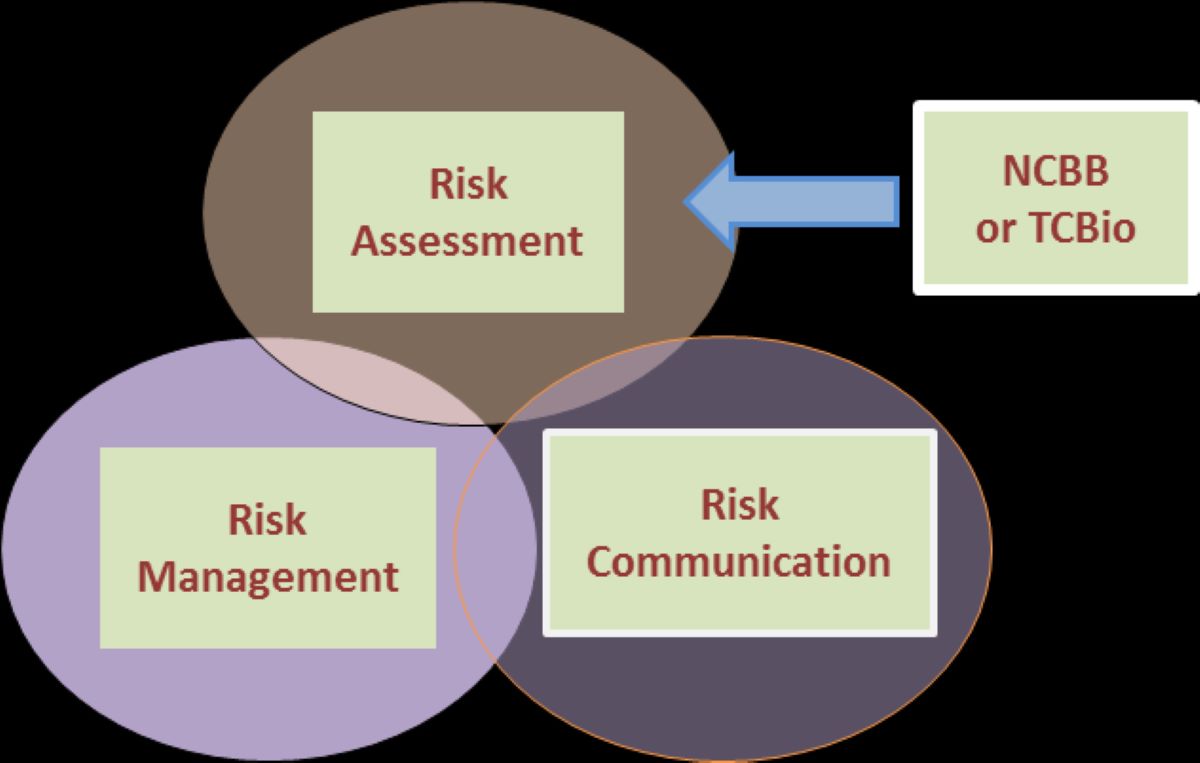

Finance
How Do Futures Contracts Affect Risk
Modified: December 29, 2023
Explore how futures contracts in the world of finance can impact risk levels and gain insights into the intricate relationship between these derivatives and managing financial risks.
(Many of the links in this article redirect to a specific reviewed product. Your purchase of these products through affiliate links helps to generate commission for LiveWell, at no extra cost. Learn more)
Table of Contents
- Introduction
- Understanding Futures Contracts
- Definition and Features of Futures Contracts
- Types of Risks in Trading Futures Contracts
- Effect of Futures Contracts on Market Risk
- Effect of Futures Contracts on Counterparty Risk
- Effect of Futures Contracts on Price Risk
- Effect of Futures Contracts on Leverage Risk
- Effect of Futures Contracts on Systemic Risk
- Conclusion
Introduction
Welcome to the world of futures contracts and the role they play in shaping the financial markets. If you are new to the concept of futures contracts or looking to deepen your understanding of how they affect risk, you’re in the right place.
In the world of finance, risk management is an essential aspect of any investment strategy. With various financial instruments available, each carries its own set of risks and rewards. Futures contracts are one such instrument that has a significant impact on risk exposure.
Understanding the dynamics and features of futures contracts is crucial before exploring their effect on risk. A futures contract is a legally binding agreement between two parties to buy or sell an asset at a predetermined price and date in the future. These contracts are typically traded on exchanges, providing liquidity and a standardized framework for investors.
The primary purpose of futures contracts is to enable market participants to hedge against price fluctuations, speculating on the future direction of asset prices. By doing so, investors can mitigate risk and protect themselves from unexpected market movements.
Now, let’s dive deeper into the definition and features of futures contracts, and how they impact different types of risks in the financial markets.
Understanding Futures Contracts
Futures contracts are derivative financial instruments that derive their value from an underlying asset, such as commodities (like oil or gold), currencies, stock indices, or even interest rates. These contracts are standardized in terms of quantity, quality, delivery date, and settlement procedures, which allows for efficient trading.
One of the key elements of futures contracts is leverage. Investors are only required to deposit a fraction of the contract’s total value, known as the margin. This allows them to control a larger position in the market. While leverage can amplify potential profits, it also increases the risk of losses. Therefore, risk management is of utmost importance when trading futures contracts.
Another important aspect of futures contracts is their expiry date, which determines the timeframe within which the contract must be settled. This means that investors have a designated period to either close out their positions or take delivery of the underlying asset. Most traders, however, prefer to close their contracts before the expiry date, as physical delivery may not be suitable for their trading strategies.
The pricing of futures contracts is an interesting concept to grasp. It is heavily influenced by the spot price of the underlying asset, as well as factors such as interest rates, dividends, storage costs, and market expectations. The difference between the futures price and the spot price, known as the basis, can provide valuable insights into market sentiment and potential arbitrage opportunities.
With the advent of electronic trading platforms, futures contracts have become more accessible to individual investors. They can now participate in various markets, allowing for diversification and the potential for enhanced returns. However, it is essential to note that futures trading involves substantial risk and may not be suitable for all investors.
Now that we have a solid understanding of what futures contracts are and their fundamental characteristics, let’s explore how these contracts impact different types of risks in the financial markets.
Definition and Features of Futures Contracts
Futures contracts are financial derivatives that obligate the buyer to purchase or the seller to sell an underlying asset at a predetermined price and date in the future. They are standardized agreements traded on regulated exchanges, providing liquidity and transparency to market participants.
One notable feature of futures contracts is their standardized nature. Each contract specifies the underlying asset, quantity, delivery date, and delivery location. This standardization ensures uniformity and facilitates efficient trading, as market participants know exactly what they are buying or selling.
Another key feature of futures contracts is their margin requirement. Unlike other investment instruments, such as stocks, futures contracts require only a small percentage of the total contract value to be deposited as margin. This allows investors to control a larger position in the market, amplifying both potential profits and losses.
Futures contracts also have a specified expiration or delivery date. This serves as a deadline for the contract to be settled. However, it’s important to note that most futures contracts are closed out prior to the delivery date, as traders prefer to offset their positions rather than taking physical delivery of the underlying asset.
Liquidity is a crucial aspect of futures contracts. Since these contracts are traded on exchanges, there is a continuous market where buyers and sellers can transact. This ensures that market participants can enter and exit positions with ease, reducing the risk of being unable to find a buyer or seller.
One of the unique aspects of futures contracts is their price transparency. The prices at which futures contracts are traded are publicly available, allowing investors to assess the fair value of an underlying asset. This transparency helps to create a level playing field and facilitates efficient price discovery.
Lastly, futures contracts are subject to daily mark-to-market settlements. This means that gains or losses on open positions are realized on a daily basis. If the market moves in favor of a futures contract holder, profits are credited to their account. Conversely, if the market moves against them, losses are deducted from their account. This daily settlement process ensures that both parties maintain adequate margin levels throughout the duration of the contract.
Understanding the features of futures contracts is essential for investors looking to trade them. These features contribute to the unique risk characteristics associated with futures contracts, which we will explore further in the following sections.
Types of Risks in Trading Futures Contracts
Trading futures contracts involves exposure to various types of risks that investors need to be aware of. Understanding these risks is crucial for effective risk management and successful trading strategies. Let’s take a closer look at the different types of risks associated with trading futures contracts:
- Market Risk: Market risk refers to the potential for losses due to changes in the overall market conditions. Factors such as economic indicators, geopolitical events, and supply-demand dynamics can impact the prices of underlying assets. Traders need to closely monitor market trends and anticipate potential price movements to mitigate market risk.
- Counterparty Risk: Counterparty risk is the risk that the other party involved in a futures contract may default on their obligations. While exchanges provide a centralized clearinghouse to mitigate counterparty risk, there is still a possibility of financial failure. It is essential to assess the financial stability and credibility of the counterparties involved in order to manage this risk effectively.
- Price Risk: Price risk is the risk of losses due to adverse price movements in the underlying asset. Futures contracts are highly sensitive to price fluctuations, and traders must monitor market trends and employ risk management techniques, such as setting stop-loss orders, to protect against price risk.
- Leverage Risk: Leverage is a double-edged sword in futures trading. While it allows investors to control a larger position with a smaller initial investment, it also amplifies potential losses. If the market moves against a leveraged position, losses can exceed the initial investment. Traders should carefully consider their risk appetite and use appropriate risk management strategies when utilizing leverage.
- Systemic Risk: Systemic risk refers to the risk of widespread financial instability that can impact the entire market or sector. Factors like economic recessions, regulatory changes, or systemic failures can result in increased volatility and losses in futures contracts. Diversification and monitoring systemic risk factors are crucial in managing this type of risk.
It is important for traders to understand and manage these risks effectively. Implementing risk mitigation strategies, diversifying portfolios, conducting thorough market analysis, and staying updated on market events are key steps to navigate the risks in trading futures contracts.
Effect of Futures Contracts on Market Risk
Futures contracts play a significant role in shaping market risk. They provide a mechanism for market participants to hedge against price fluctuations and manage their exposure to market volatility. Here, we examine the effect of futures contracts on market risk:
Price Stabilization: Futures contracts help to stabilize prices by providing a platform for market participants to buy and sell commodities or financial instruments in the future at predetermined prices. This reduces uncertainty and promotes stability in the market. For example, in the agricultural sector, farmers can lock in prices for their produce through futures contracts, ensuring a more predictable income and managing the risk of price fluctuations.
Enhanced Liquidity: Futures contracts contribute to the liquidity of the underlying markets. They attract a wide range of market participants, including hedgers, speculators, and arbitrageurs. The presence of these participants increases trading volumes and improves the efficiency of price discovery. Higher liquidity reduces the impact of large buy or sell orders on market prices, minimizing the risk of extreme price movements.
Risk Management: Futures contracts enable investors to manage market risk by taking offsetting positions. For example, if an investor holds a portfolio of stocks and anticipates a market downturn, they can sell stock index futures contracts to offset potential losses. This allows them to protect their portfolio from adverse market movements and effectively manage their exposure to market risk.
Volatility Management: Volatility can create opportunities and risks in financial markets. Futures contracts provide a means for traders to speculate on or hedge against volatility. Through the use of volatility futures or options, investors can manage their exposure to price fluctuations caused by market uncertainty. This helps to mitigate the potential impact of volatility on their portfolios and reduces overall market risk.
Market Efficiency: Futures contracts facilitate efficient price discovery by providing a platform for transparent trading. This information dissemination helps market participants make informed decisions and respond quickly to changing market conditions. Increased market efficiency reduces information asymmetry and promotes fair pricing, mitigating the risk of mispriced assets and reducing market risk for all participants.
In summary, futures contracts have a profound impact on market risk. They contribute to price stabilization, enhance liquidity, facilitate risk management, assist in managing volatility, and promote market efficiency. By providing a framework for managing and transferring risk, futures contracts play a crucial role in reducing market risk and ensuring the smooth functioning of financial markets.
Effect of Futures Contracts on Counterparty Risk
Counterparty risk is a significant concern in financial transactions, but futures contracts help mitigate this risk through their unique characteristics and market infrastructure. Here, we explore the effect of futures contracts on counterparty risk:
Central Clearing: One of the key features of futures contracts is the presence of a central clearinghouse. When a futures contract is executed, the clearinghouse acts as the counterparty to both the buyer and the seller. This eliminates the direct counterparty risk between the two parties involved in the transaction. The clearinghouse ensures the financial integrity of the market by guaranteeing the performance of all trades, reducing the risk of default.
Mandatory Margin Requirements: Futures contracts require market participants to maintain margin accounts. Margin acts as collateral to cover potential losses, ensuring that participants have sufficient funds to fulfill their obligations. The margin requirements act as a financial buffer, reducing the risk of default. If a trader’s margin falls below a certain threshold, they may face a margin call and need to meet the requirement to continue trading.
Mark-to-Market Valuation: Futures contracts employ a mark-to-market valuation method. This means that the value of the contract is adjusted daily based on the current market price of the underlying asset. Any gains or losses are settled on a daily basis, reducing the risk of accumulating significant losses and defaulting on obligations. This frequent valuation mechanism ensures that both parties maintain sufficient margin levels, minimizing counterparty risk.
Regulatory Oversight: Futures contracts are subject to regulatory oversight to ensure transparency and fair market practices. Regulators monitor the operations of exchanges, clearinghouses, and market participants to enforce rules and regulations. This oversight helps to maintain the robustness and reliability of the market infrastructure, reducing the likelihood of counterparty risk.
Netting: Futures contracts allow for the netting of positions. This means that if a market participant holds multiple contracts with the same counterparty, the positions can be offset against each other. Netting reduces the overall exposure between counterparties, effectively lowering counterparty risk. This mechanism ensures that participants only need to settle the net difference rather than multiple individual contracts.
Overall, futures contracts have a positive impact on counterparty risk. The presence of a central clearinghouse, mandatory margin requirements, mark-to-market valuation, regulatory oversight, and netting all contribute to reducing counterparty risk in futures trading. Market participants can feel more secure in their transactions, knowing that there are mechanisms in place to mitigate the risk of default and ensure the smooth functioning of the market.
Effect of Futures Contracts on Price Risk
Futures contracts have a significant effect on managing and mitigating price risk for market participants. Here, we explore the impact of futures contracts on price risk:
Hedging: One of the primary functions of futures contracts is to allow market participants to hedge against price risk. Hedging involves taking an offsetting position in a futures contract to protect against potential losses or gains from an underlying asset. By holding a futures contract, investors can lock in a specific price, reducing their exposure to price fluctuations. This ability to hedge helps manage price risk for various market participants, from producers and consumers to speculators and investors.
Price Discovery: Futures contracts play a crucial role in price discovery. As these contracts are actively traded and widely accessible to market participants, the prices at which they are traded provide valuable information about market expectations and supply-demand dynamics. The transparent price discovery mechanism of futures contracts reduces information asymmetry, allowing market participants to make informed decisions based on market trends. This helps mitigate price risk by providing a more accurate assessment of fair value.
Arbitrage Opportunities: Futures contracts create arbitrage opportunities, which can help mitigate price risk. Arbitrageurs take advantage of price differences between the spot market and the futures market by simultaneously buying in one market and selling in the other. This helps align prices and reduces price discrepancies, thereby reducing the potential for price risk caused by market inefficiencies.
Speculation: Futures contracts provide a platform for speculation on the future price movements of an underlying asset. Speculators take positions in futures contracts based on their expectations of market trends. While speculation introduces additional risk, it also contributes to market liquidity and price discovery. Speculators actively participating in futures markets help absorb excess supply or demand, thereby reducing potential price volatility and managing price risk.
Price Volatility Management: Futures contracts enable market participants to manage price volatility risk. Volatility can lead to uncertainties and potential losses. However, through futures contracts, traders can enter into positions specifically designed to profit from or hedge against volatility. For example, volatility futures or options can be utilized to protect against sudden price swings. This helps manage and mitigate price risk associated with heightened volatility.
In summary, futures contracts have a significant impact on managing and mitigating price risk. They provide a mechanism for hedging, facilitate price discovery, create arbitrage opportunities, allow for speculation, and enable volatility management. By utilizing these instruments effectively, market participants can better manage their exposure to price risk and navigate the dynamic nature of financial markets.
Effect of Futures Contracts on Leverage Risk
Futures contracts have a profound impact on leverage risk, which refers to the potential for magnified gains or losses due to the use of borrowed funds and the inherent leverage in trading these contracts. Let’s delve into the effect of futures contracts on leverage risk:
Increased Trading Power: Futures contracts offer significant leverage, allowing market participants to control a larger position in the market with a relatively small initial investment. This increased trading power amplifies both potential profits and losses. While leverage can potentially lead to substantial gains, it also heightens the risk of significant losses if the market moves against the trader’s position.
Risk Management Considerations: Given the inherent leverage in futures trading, effective risk management strategies are essential to mitigate leverage risk. Traders need to assess their risk tolerance, establish appropriate position sizing, and set stop-loss orders to limit potential losses. Implementing risk control measures and using disciplined risk management techniques are crucial when trading futures contracts to minimize excessive leverage and control leverage risk.
Margin Requirements: Futures contracts have specific margin requirements, which mandate that traders maintain a minimum amount of funds in their trading accounts to cover potential losses. Margin acts as a form of collateral against potential losses, reducing the risk of default. Monitoring and managing margin levels closely is essential to control leverage risk effectively.
Margin Calls: If the value of a futures contract moves against a trader’s position and the margin falls below a certain threshold, a margin call may be triggered. A margin call requires the trader to deposit additional funds into their margin account to bring it back to the required level. Failure to meet a margin call may result in the trader needing to close their position, incurring potential losses. Managing margin calls is critical to avoid unexpected liquidation of positions and to control leverage risk.
Risk-Reward Assessment: The leverage provided by futures contracts requires traders to carefully assess the risk-reward ratio of their positions. It is essential to thoroughly analyze market trends, conduct proper research, and evaluate the potential risks before entering into a leveraged position. A thorough understanding of the underlying market dynamics and the potential impact on price movements is crucial in managing leverage risk effectively.
Overall, futures contracts have a significant impact on leverage risk. While leverage can enhance potential profits, it also elevates the risk of substantial losses. Traders must exercise caution, implement robust risk management strategies, and closely monitor their margin requirements to effectively control leverage risk when trading futures contracts.
Effect of Futures Contracts on Systemic Risk
Futures contracts play a role in influencing systemic risk, which refers to the risk of widespread financial instability that can impact the entire market or sector. Here, we explore the effect of futures contracts on systemic risk:
Market Efficiency: Futures contracts contribute to market efficiency by providing a platform for transparent and regulated trading. Efficient markets help reduce informational asymmetry and promote fair pricing. This, in turn, helps mitigate systemic risk by ensuring that asset prices more accurately reflect their fundamental values.
Liquidity Provision: Futures contracts enhance market liquidity by attracting diverse market participants, including hedgers, speculators, and arbitrageurs. Increased liquidity reduces the risk of market disruptions and facilitates smooth trading, even during periods of heightened volatility. The presence of liquidity providers helps alleviate systemic risk by ensuring market participants can readily enter and exit positions, reducing the potential for illiquidity-driven crises.
Risk Transfer: Futures contracts enable the transfer of risk from one party to another. Hedgers use futures contracts to mitigate risks associated with price fluctuations or market volatility by transferring those risks to speculators. This risk transfer mechanism helps diversify risk across market participants and reduces the potential for concentrated risk exposures, thereby mitigating systemic risk.
Transparency and Regulation: Futures contracts are subject to stringent regulations and oversight. Regulatory authorities monitor exchanges, clearinghouses, and market participants to ensure compliance with rules and regulations. This regulatory framework helps maintain the integrity of financial markets and reduces the likelihood of excessive risk-taking or market manipulation that could contribute to systemic risk.
Price Discovery: Futures contracts play a vital role in price discovery, reflecting market expectations and supply-demand dynamics. Transparent price discovery helps reduce information asymmetry and assists investors in making informed decisions. Accurate price discovery contributes to the stability of financial markets and diminishes the potential for price-driven panic or mispricing that can contribute to systemic risk.
Risk Management: Futures contracts provide a mechanism for effective risk management, allowing market participants to hedge against price or volatility risks. This risk management capability fosters stability in financial markets and reduces the potential for sudden, unexpected shocks. By providing tools for risk mitigation, futures contracts help mitigate systemic risk by enabling market participants to manage and navigate various risk exposures.
Overall, futures contracts have a positive impact on mitigating systemic risk. They enhance market efficiency, provide liquidity, facilitate risk transfer, promote transparency and regulation, aid in price discovery, and enable effective risk management. By contributing to the stability and integrity of financial markets, futures contracts help mitigate systemic risk and promote the overall health of the financial system.
Conclusion
Futures contracts are powerful financial instruments that have a significant impact on risk management in the financial markets. Throughout this article, we have explored the various ways in which futures contracts affect different types of risks.
From a market risk perspective, futures contracts provide price stabilization, enhanced liquidity, risk management capabilities, and improved market efficiency. These contracts enable market participants to hedge against price fluctuations, manage their exposure to market volatility, and navigate changing market conditions.
In terms of counterparty risk, futures contracts leverage central clearing, margin requirements, mark-to-market valuation, and regulatory oversight to mitigate the risk of default. The presence of these mechanisms enhances the trust and stability of the market infrastructure, reducing counterparty risk for market participants.
Futures contracts also directly influence price risk by facilitating hedging, price discovery, arbitrage opportunities, speculation, and volatility management. Traders can use futures contracts to protect against price fluctuations, manage volatility exposure, and achieve fairer and more accurate pricing in the financial markets.
Leverage risk is a key consideration when trading futures contracts due to the amplification of potential gains and losses. Effective risk management strategies, margin requirements, and adherence to disciplined trading practices help control leverage risk and protect traders from excessive losses.
Lastly, futures contracts contribute to the overall reduction of systemic risk by promoting market efficiency, providing liquidity, facilitating risk transfer, enforcing transparency and regulation, aiding in price discovery, and enabling effective risk management practices. These factors contribute to the stability of financial markets and mitigate the potential for widespread financial instability.
In conclusion, futures contracts are vital financial instruments that offer numerous benefits to market participants while also introducing certain risks. Understanding the features and dynamics of these contracts allows traders and investors to navigate the complex landscape of financial markets effectively. By utilizing futures contracts with a clear understanding of their impact on risk, market participants can enhance their risk management strategies, protect against adverse market conditions, and pursue their financial objectives with confidence.














